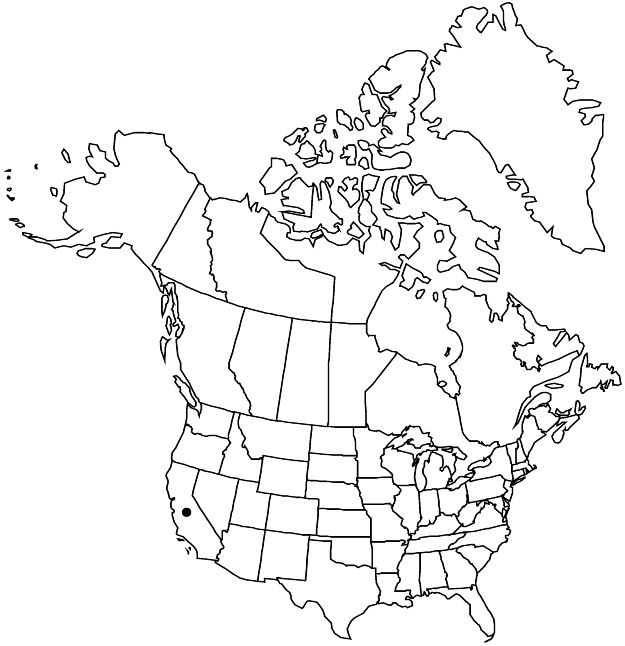Sidalcea hickmanii subsp. viridis
Perenn. Sp. Sidalcea, 78. 1957.
Plants usually greenish, (0.2–)0.3(–0.4) m, with taproot and caudex. Stems erect, usually reddish, sparsely stellate-hairy, distally with hairs tufted, not appressed, 0.5–1.2 mm. Leaves: stipules lanceolate, 2–4 × 1–1.5 mm; petiole 1–3 cm, to 1/2–2 1/2 times as long as blade; blade reniform to flabelliform, rounded, usually truncate or with wide sinus, unlobed or very shallowly incised, (1–)2–4 × 1–2.7 cm, margins coarsely crenate, surfaces stellate-hairy. Inflorescences open, spiciform in age, branched or unbranched, 10+-flowered, 10–20 cm, flowers evenly spaced, proximalmost often solitary, axillary; bracts (1 or)2, distinct, flat or cupped, distalmost undivided or 2-fid, proximal distinct to base, lanceolate to narrowly oblong, 2–5 × 0.5–1 mm, shorter or longer than pedicels, shorter than calyx. Pedicels 1–3(–5) mm, usually not obscured by bracts; involucellar bractlets 3, (2–)3–4 mm, shorter than calyx. Flowers bisexual, probably unisexual and pistillate also, plants gynodioecious; calyx 6–7 mm, densely stellate-puberulent, hair length uniform; petals pink or pale lavender, (5–)11–14 mm, pistillate smaller; staminal column 4–5 mm, hairy; anthers white; stigmas (4–)7. Schizocarps 5–6 mm diam.; mericarps usually (4–)7, 1.5–2 mm, side walls smooth, back and margins with 2–5 corrugations. Seeds 1–1.5 mm.
Phenology: Flowering May–Jun.
Habitat: Dry ridges, with serpentine or serpentinite
Elevation: 300–600 m
Discussion
Of conservation concern.
Subspecies viridis is similar to subsp. hickmanii but is generally smaller in stature, more greenish than grayish green, and has smaller leaves and a more open inflorescence. It is most similar to the dwarf subsp. pillsburiensis. Plants from Mendocino and Sonoma counties reported as this subspecies are usually S. malviflora subsp. rostrata, confused with this because of their generally unlobed leaves; S. malviflora has no involucellar bractlets, has mucronate fruits, and is generally coastal. Subspecies viridis is known only from Carson Ridge, north Central Coast Range, Marin County.
Selected References
None.
